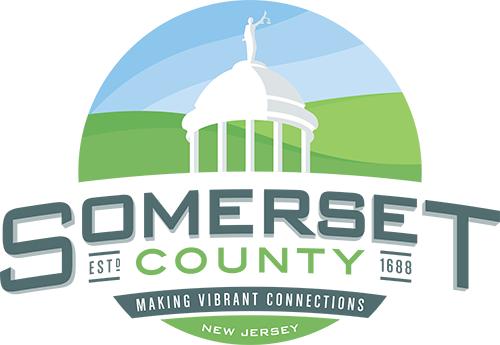About The Project
Somerset County and Morris County, in coordination with the North Jersey Transportation Planning Authority (NJTPA) and the New Jersey Department of Transportation (NJDOT) are currently conducting Local Preliminary Engineering (LPE) to replace the existing three-span Valley Road Bridge with a single span structure.
The LPE Phase involves performing engineering tasks and technical environmental studies in order to obtain formal community consensus (through a public information center) of the study. The approval of the environmental document (i.e., NEPA document) from FHWA also takes place in this phase. Based on the Preliminary Preferred Alternative (PPA), a number of activities are simultaneously set in motion: community involvement (meetings with affected property or business owners), agency consultation, environmental documentation, design level mapping and design services. To obtain the formal community consensus, a public information session will be conducted, which may lead to some minor adjustments to the PPA. Ultimately, the effected municipalities will be asked to provide a Resolution of Support endorsing the project.
- Project Kick-off (January 2018)
- Data Collection (Early 2018): Review existing documentation, mapping and surveying, cultural resource report, etc.
- Purpose and Needs Statement Developed (Early 2018)
- Alternative Analysis (Mid 2018): Develop engineering alternatives and conduct impact assessment of alternatives
- Selection of Preliminary Preferred Alternative (Late 2018)
- Documentation (Late 2018/Early 2019): Prepare cost estimates, NEPA classification and documentation, preliminary engineering next steps, etc.
- Draft Local Concept Development Report (Late 2018)
- Final Local Concept Development Report (Late 2018)
Location: Bernards and Long Hill Townships
About the Bridge:
The existing Valley Road Bridge over the Passaic River is a three-span concrete encased steel multi-stringer bridge built in 1931with an approximate total span length of 100 feet. The bridge carries two 13.5′ lanes, one 2′ wide westbound shoulder, one 4′ wide eastbound shoulder and two 5.5′ wide sidewalks.
Description of the Preliminary Preferred Alternative:
The Preliminary Preferred Alternative consists of a full replacement of the existing Valley Road Bridge with a single span steel stringer bridge on concrete abutments. Valley Road will be realigned to the north at the bridge by approximately 10 feet to accommodate construction staging and maintain traffic during construction. Due to the proposed bridge construction, River Road east of the bridge will also be realigned and a new intersection at River Road and Valley Road will be constructed. The proposed bridge will accommodate two 12’ lanes, two 8’-4” shoulders, and two 6’ wide sidewalks.
Local Preliminary Engineering (LPE) is the second phase of work for the Local Capital Project Delivery Program. The LPE Phase involves performing engineering tasks and technical environmental studies in order to obtain formal community consensus. The approval of the environmental document (NEPA document) from FHWA also takes place in this phase. The following activities will be completed during LPE: community involvement, agency consultation, environmental documentation, preparation of design level mapping, preliminary design services, and refinement of the PPA. A public information session will be conducted to obtain the formal community consensus. At the close of LPE, Bernards Township and Long Hill Township officials will be asked to provide a Resolution of Support endorsing the project.
The tasks conducted during this phase will consist of, among other things:
- Development of design level base plans
- Development of roadway and bridge geometric design to clarify environmental impacts and right-of-way impacts
- Utility discovery and verification
- Geotechnical studies (soil borings and analysis) for foundation design
- Preliminary drainage design
- Driveway access impact evaluation
- Development of right-of-way and construction cost estimates
Federally-funded projects require an environmental screening that follows the National Environmental Policy Act (NEPA) process. The NEPA process enables the project sponsor to establish existing socioeconomic and environmental conditions in the project area and weigh the potential impacts that may be caused by the Preliminary Preferred Alternative (PPA). When analyzing the PPA, federal and state regulations require careful assessment and mitigation or avoidance of the potential negative environmental impacts. Environmental studies for air, noise, hazardous or contaminated sites, parks, wetlands, water resources, social and economic impacts, and cultural resources such as historic structures and facilities will be completed and summarized in the Environmental Document. For this project, the Environmental Document will be a Categorical Exclusion Document (CED). The results of the studies will be summarized in the CED and submitted to NJDOT and FHWA for approval.
The project has advanced to the second stage of the Local Project Delivery Process and is now in Local Preliminary Engineering. The project team will continue to work with the Local Officials, Project Stakeholders, and the community to reconfirm support for the project, solicit input to inform on concerns or updates on local conditions, and share information with the project’s stakeholders as the design develops.
Local Capital Project Delivery (LCPD) Program
Local Preliminary Engineering is the second phase for federally funded transportation improvement projects. The Local Capital Project Delivery (LCPD) Program provides funding to NJTPA sub regions – the 15 city and county members of the NJTPA – to prepare proposed transportation projects for eventual construction with federal funding.
This preparation involves completing the multi-step Capital Project Delivery Process developed by NJDOT. This process is designed to streamline project development and provide a common and consistent framework for federally funded projects at the local, regional and state level.
Local Capital Project Delivery Process
| 1. Local Concept Development | 2. Local Preliminary Engineering | 3. Final Design/ROW Acquisition | 4. Construction |
|---|---|---|---|
| Purpose & Need Statement | Approved Design Exception Report | Construction Contract Documents & PS&E Package | Completed Construction |
| Data Collection & Environmental Screening Report | Cost Estimates (Final Design, ROW & Construction) | Environmental Reevaluations | As-Built |
| Selection of Preliminary Preferred Alternative | Approved Environmental Document | Environmental Permits | Update & Finalize Design Communications Report |
| Concept Development Report | Approved Project Plan | Acquisition on ROW | Close-out Documentation |
| NEPA Classification | Preliminary Engineering Report | Update Design Communications Report | |
| Create Design Communications Report | Update Design Communications Report | ||
| Initial Public Outreach & Involvement | Continued Public Outreach & Involvement | Continued Public Outreach & Involvement | Continued Public Outreach & Involvement |





